Text

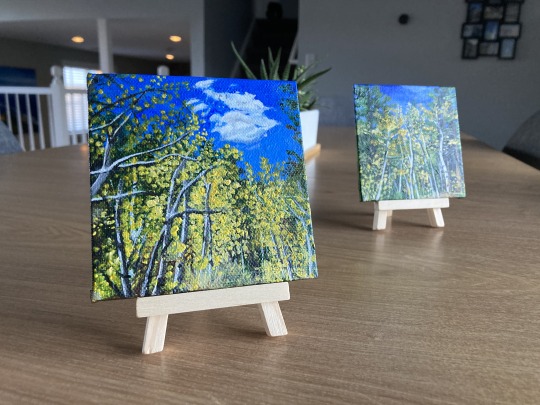
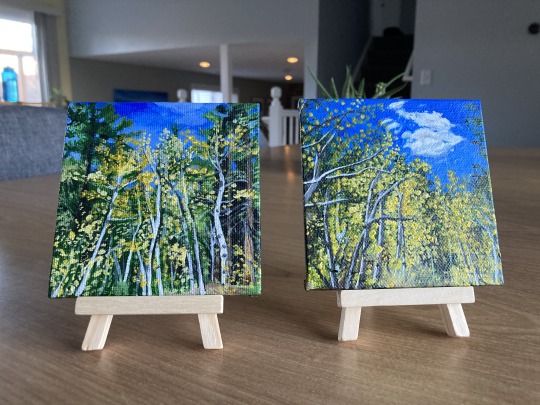
Over the holidays, I painted mini paintings to give as gifts. Aspen and Autumn are based on photos taken on a hike this past fall on Lower Dadd Gulch Trail. It was a beautiful hike!
Image credits:
Aspen, 2023 | Acrylic on canvas | 4x4inches
Autumn, 2023 | Acrylic on canvas | 4x4inches
0 notes
Text
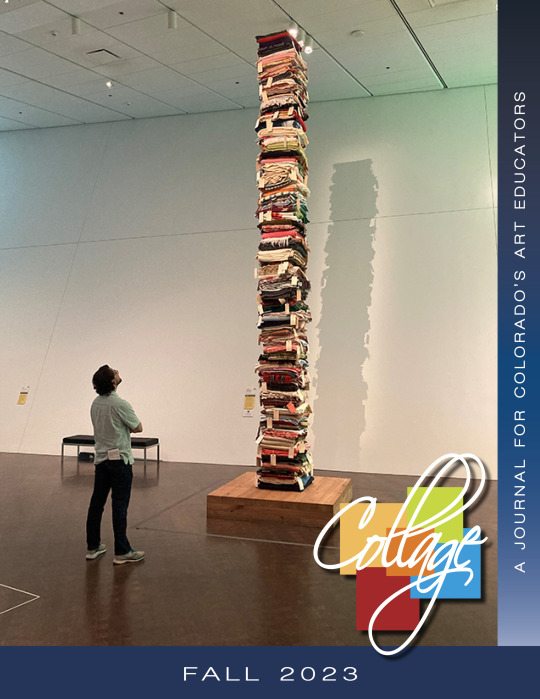
Check out the Fall 2023 issue of Collage! Read my article "Editor’s Pick: Desert Rider: Dreaming in Motion, Modern and Contemporary Art, and More, Denver Museum of Art” on pages 31-33.
#magazineeditor#editor#literature#artzine#magazine#publication#article#arteducation#caea#collage#colorado#fall#fallissue#journal
0 notes
Text
Cherry Blossom Tree
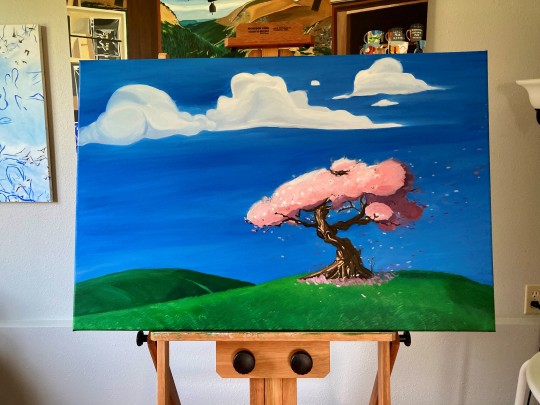
One major difference between making Cherry Blossom Tree and The Murmuration was the intention. The Murmuration was born out of a desire to play whereas Cherry Blossom Tree was commissioned. I had no expectation of displaying The Murmuration, but I created Cherry Blossom Tree specifically to be hung in my husband’s study.
Looking back on the experience of painting both pieces, I see how much more challenging it was to paint Cherry Blossom Tree. I had to make it work. It was not for me but for a loved one. I wanted my husband to be pleased. This led to me simultaneously being stressed out and more open to feedback. I felt somewhat detached because I was not making it to my own personal taste. I had no qualms about immediately making any changes that my husband proposed. In the end, I produced something better than I had expected. While the piece is not an artwork I would have ever made for myself, I am grateful for the experience and the success. Every piece makes you stronger. Creating something outside of your normal style is a great way to practice the Studio Habit of Mind Stretch & Explore.
In both the Cherry Blossom Tree and The Murmuration, I did not know the meaning of the pieces until after I had finished it. This is not my normal M.O. I usually start with a message and then determine how to create an artwork that will communicate the intended meaning. I found it liberating to allow the meaning to develop with the artwork. True to the description of Express in Studio Thinking from the Start: The K-8 Art Educator's Handbook by Jillian Hogan, Lois Hetland, Diane B. Jaquith, and Ellen Winner, I discovered the meaning as I made my work.
I have been examining my studio practice through the Studio Habits’ lens. While creating Cherry Blossom Tree, I kept a log of my hours and a record of what I did each day. As I reflected on my time, I categorized the various activities by Studio Habit.
Log of Hours:
Day 1 (July 9, 2023) – 2.5 hours

Practiced the Studio Habit of Mind Understand Art Worlds by collaborating with my husband about my second piece. Researched images and discussed possibilities with my husband. Sketched out thumbnail sketches for my husband to choose from [Envision]. Practiced the Studio Habit of Mind Engage & Persist by sketching my plan onto the canvas with charcoal multiple times before finalizing it. Painted the grass and the bottom edge [Develop Craft: Technique and Observe].
Day 2 (July 10) – 2.5 hours
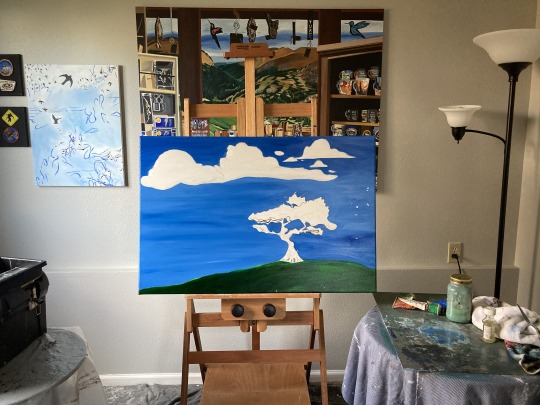
Practiced the Studio Habit of Mind Stretch & Explore by trying new things. I used Anime art as a reference instead of a photograph. Painted the sky and clouds [Develop Craft: Technique and Observe].
Day 3 (July 11) – 3.5 hours

Painted the cherry blossom tree and reworked the sky [Develop Craft: Technique and Observe]. Darkened the sky and blended the brushstrokes to create a sense of wind [Express].
Day 4 (July 12) – 4.75 hours
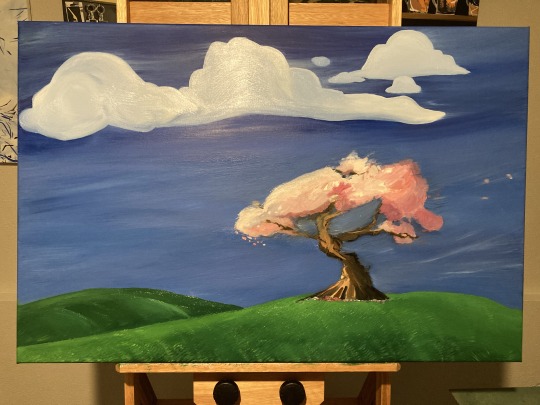
Repainted the grass and sky [Develop Craft: Technique and Observe]. Created deliberate brushstrokes to add texture to the grass and to show wind blowing the grass [Express]. Lightened the sky in an area that was too dark. Blended different values on the clouds. Created fuller blossoms on the cherry blossom tree. Sought and listened to feedback from my husband [Understand Art Worlds].
Day 5 (July 15) – 3 hours

Created dramatic lighting by painting different values on the cherry blossom tree and the grass [Develop Craft: Technique and Observe]. Made it look like sunrise [Express].
Day 6 (July 16) – 7.5 hours

Repainted the clouds multiple times and painted over the sky [Engage & Persist]. Solved the problem of the clouds not flowing with the rest of the painting by adding some of the colors from different parts of the painting into the clouds. For example, painted a very subtle pink along the bottom edge of the clouds. Reshaped the clouds and made them smaller. Added more cherry blossoms being blown in a gentle breeze and on the ground [Express]. Collaborated with my husband frequently to ensure that the painting was going to meet expectations [Understand Art Worlds]. Learned that the imagery is what my husband visualizes when cultivating a calm feeling [Express]. Completed my second artwork.
Total – 23.75 hours
Image credit: Cherry Blossom Tree, 2023 | Oil on canvas | 24x36 inches
Reference
Hetland, L., Hogan, J., Jaquith, D., & Winner, E. (2018). Studio Thinking from the Start: The K-8 Art Educator’s Handbook. Teachers College Press.
1 note
·
View note
Text
The Murmuration
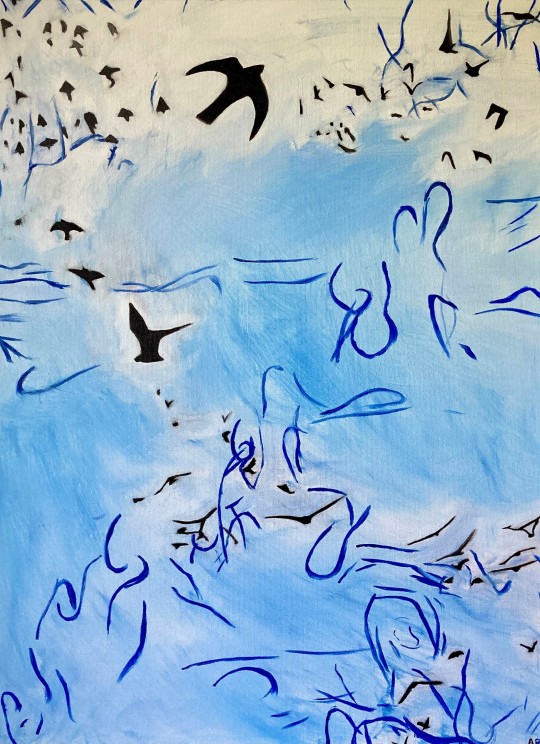
Last spring, I set a goal to create two paintings this summer. I knew one would be a painting of a cherry blossom tree that my husband had asked for a while back. I had no idea what I would paint for the other one.
At the beginning of the summer, I took a Storytelling and Bookmaking in the Art Studio course. One of our projects was to create an altered book. When shifting through the box of discarded books, I came across Leon Leyson’s The Boy on the Wooden Box. I chose it because it had these wonderful, silhouetted images of birds in flight as chapter headings. I started to glue beautiful white tissue paper embedded with blue thread on the end pages. Careful to leave the birds intact, I collaged around them. Then, I created my own scene of flowers, spirals, and wind. I had no intention of it becoming anything beyond an experiment. Free from the pressure of creating something that would be shared, I simply played.
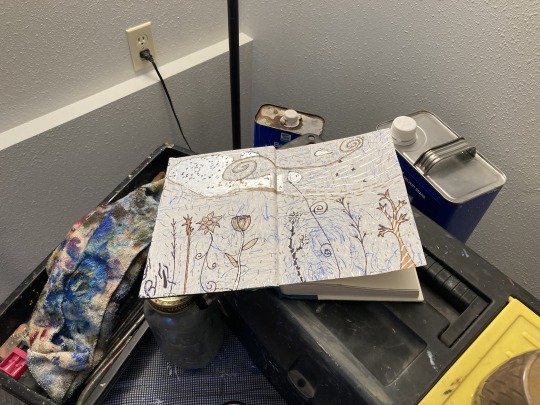
The next day during a Digital Portfolios course, I was introduced to a printmaking technique which substituted ink with markers. Eager to try it out, I decided to engrave a flock of birds onto my Styrofoam plate. The printmaking process was a total flop, but I left the class knowing I wanted to do something more with the bird imagery.
That is when I decided to paint the birds. Embracing the joy of play, I allowed myself to let go of my quite serious artmaking practice and to veer away from my normal realism. Instead, I created something whimsical—The Murmuration.
While creating The Murmuration, I kept a log of my hours and a record of what I did each day. As I reflected on my time, I categorized the various activities by Studio Habit as defined in Studio Thinking from the Start: The K-8 Art Educator's Handbook by Jillian Hogan, Lois Hetland, Diane B. Jaquith, and Ellen Winner:
Develop Craft (Technique: Learning to use tools, materials, and artists conventions and Studio Practice: Taking care of tools, materials, works, and space)
Engage & Persist (Finding personally meaningful projects and sticking to them)
Envision (Imagining new artworks and steps to bring them to life)
Express (Making works that convey personal meaning and interpreting meaning in the works of others)
Observe (Look closely and noticing)
Reflect (Question & Explain: Talking about students’ work and working processes and Evaluate: Talking about what works well, what does not, and why, in works by self and others)
Stretch & Explore (Playing, trying new things, making mistakes, and learning from them)
Understand Art Worlds (Domain: Learning about what artists make and Communities: Learning to collaborate and understanding that artists often work in groups) (p.4)
As I reflect on the creation of The Murmuration, I am struck by how much playing, failing, and redoing goes into my studio practice. Seeing an artwork through from start to finish not only requires commitment but also a willingness to go on a journey. You have to be okay with not knowing exactly what directions to follow to get to the destination. At times, you are fumbling. At other times, you are right on track.
Log of Hours:
Day 1 (June 21, 2023) – 2 hours
Practiced the Studio Habit of Mind Develop Craft: Studio Practice by setting up my home art studio. Organized my workspace, inventoried my art materials and tools, and bought materials I needed. Measured windows for assembling custom screens so that I can open my studio window for ventilation. Practiced the Studio Habit of Mind Envision by imagining new artworks and steps to bring them to life. I envisioned a plan to create a final artwork of birds flying for me and a final artwork of cherry blossom trees for my husband's study. Discussed canvas size/dimensions options with my husband.
Day 2 (June 22) – 3.5 hours
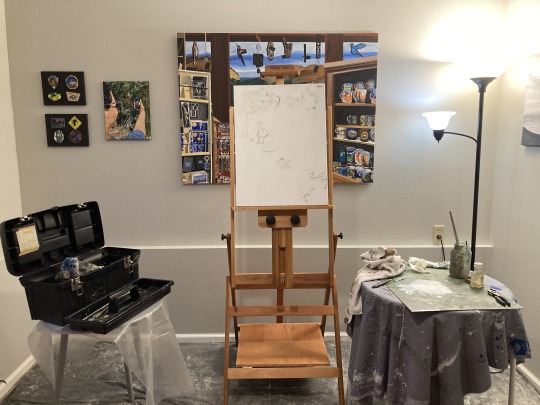
Sketched out birds on the canvas with charcoal [Envision]. Practiced the Studio Habit of Mind Develop Craft: Technique by practicing with techniques and materials. Painted the background. Practiced the Studio Habit of Mind Reflect by documenting my artmaking process. Photographed my home studio and my work in progress for a future blog post. Self-evaluated my artwork.
Day 3 (June 23) – 1.5 hours
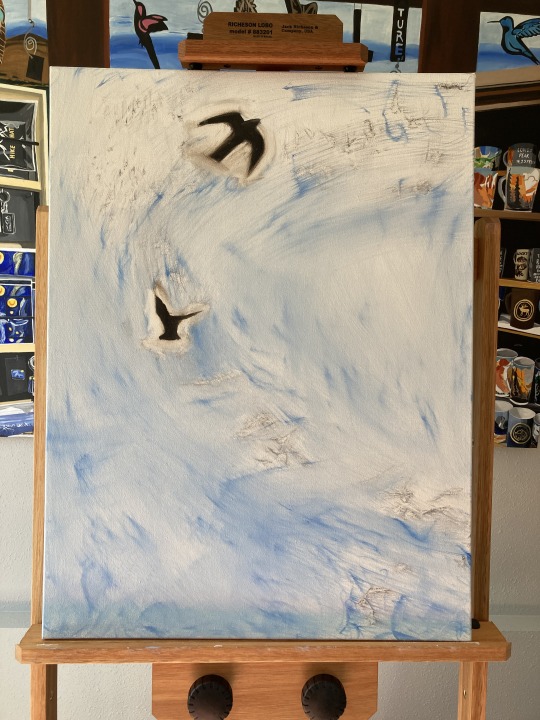
Bought a canvas and managed my art budget [Develop Craft: Studio Practice]. Collaborated with my husband about whether the canvas was a good size/dimension for his study. Painted two of the birds [Develop Craft: Technique]. Practiced the Studio Habit of Mind Observe by viewing my own work closely to find areas to keep and to improve. Removed some of the black paint from the birds until they were the right shape and size.
Day 4 (June 26) – 2 hours
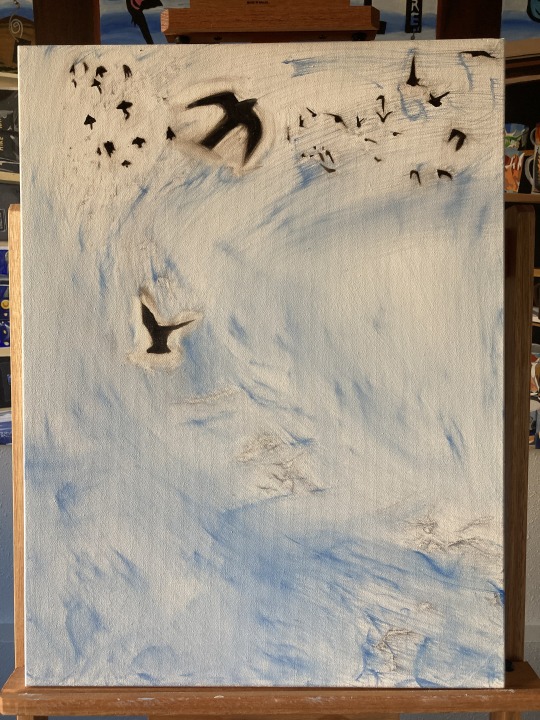
Continued to paint the birds [Develop Craft: Technique and Observe].
Day 5 (June 27) – 1 hour
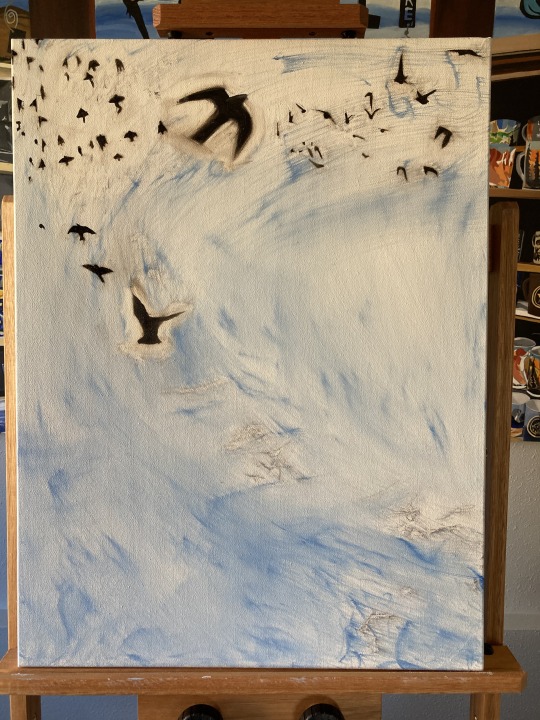
Continued to paint the birds [Develop Craft: Technique and Observe].
Day 6 (June 30) – 3 hours

Finished painting the birds and revisited the background [Develop Craft: Technique and Observe].
Day 7 (July 5) – 3.5 hours
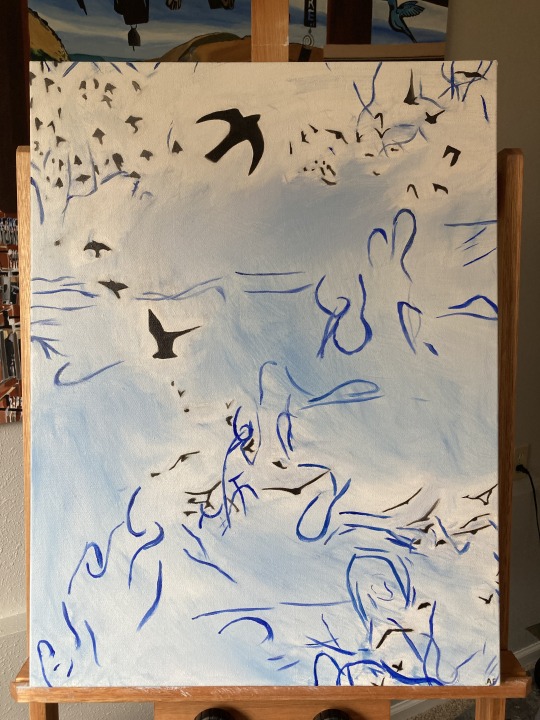
Repainted the background and the birds. Decided to make some of the birds gray to appear in the distance while keeping some birds a sharp black in the foreground [Develop Craft: Technique and Observe]. Completed finishing touches and signed my work with my initials.
Day 8 (July 6) - .25 hours
Consulted a bird expert who identified the birds as starlings. Researched starlings and decided they are a good fit. Titled piece The Murmuration. Practiced the Studio Habit of Mind Express by discerning the meaning of the piece. The painting shows only a few starlings to depict the decline in the starling population. This fits with my current body of work about ecology and humanity's complex relationship with nature [Reflect].
Total Time – 16.75 hours
Image credit: The Murmuration, 2023 | Oil on canvas | 24x18 inches
Reference
Hetland, L., Hogan, J., Jaquith, D., & Winner, E. (2018). Studio Thinking from the Start: The K-8 Art Educator’s Handbook. Teachers College Press.
0 notes
Photo
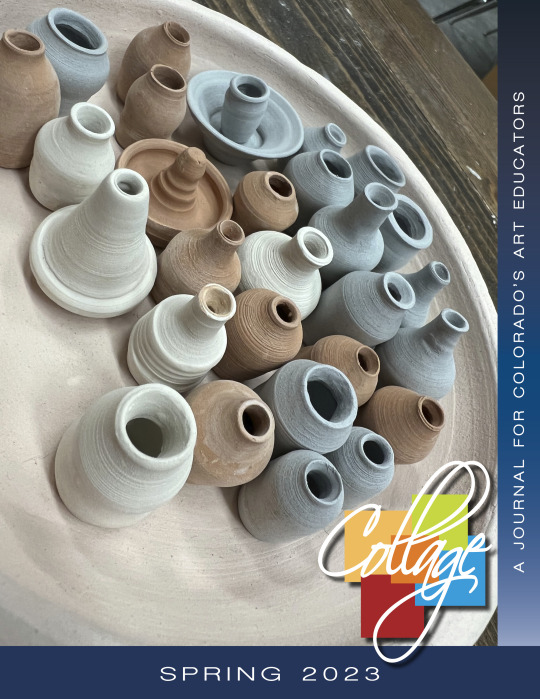
Check out the Spring 2023 issue of Collage! Read my Letter from the Editor on pages 6-7.
#magazineeditor#literature#artzine#magazine#publication#arteducation#CAEA#collage#Colorado#article#spring#springissue
0 notes
Photo
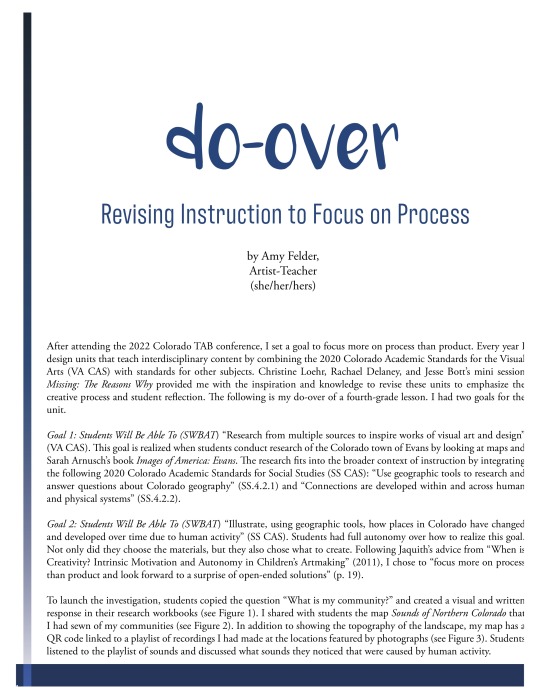

Check out the Fall 2022 and Winter 2023-2023 issues of Collage! Read my article "Do-Over: Revising Instruction to Focus on Process” on pages 14-17 of the Fall 2022 issue.
#magazineeditor#literature#artzine#magazine#publication#arteducation#caea#collage#colorado#article#fall#fallissue#winter#winterissue
0 notes
Photo
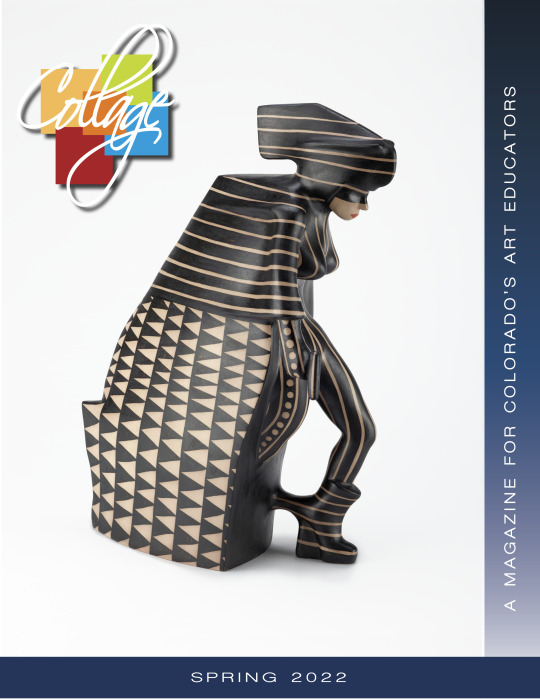
Check out the Spring 2022 issue of Collage! View great pieces by Virgil Ortiz in my article “Artist on My Mind” on pages 17-18.
#magazineeditor#literature#artzine#magazine#publication#arteducation#caea#collage#colorado#article#spring#springissue
0 notes
Photo
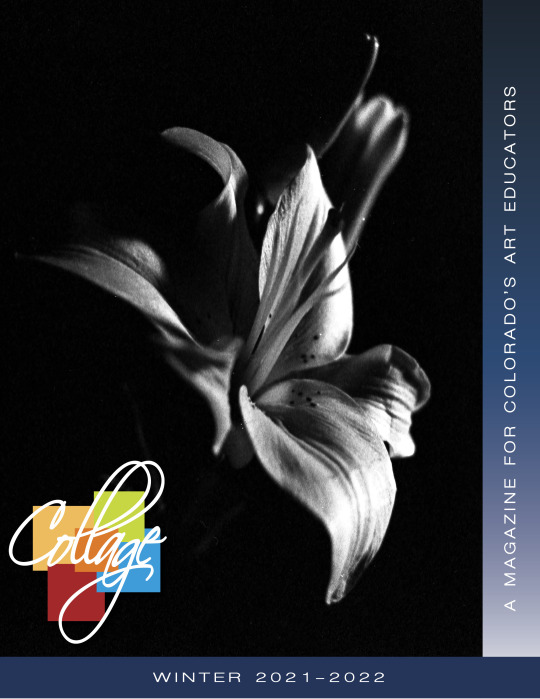
The Winter 2021-2022 issue of Collage is now live! I have an article published on pages 25-26. Check it out!
#magazineeditor#literature#artzine#magazine#publication#arteducation#caea#collage#colorado#article#winter#winterissue
0 notes
Photo
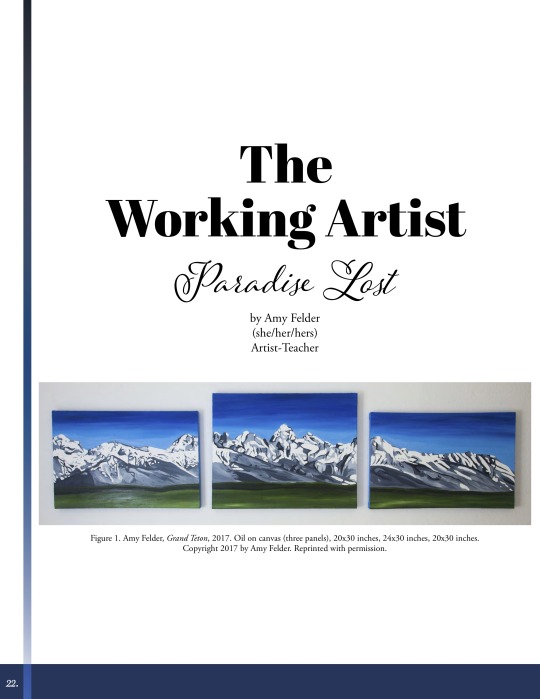
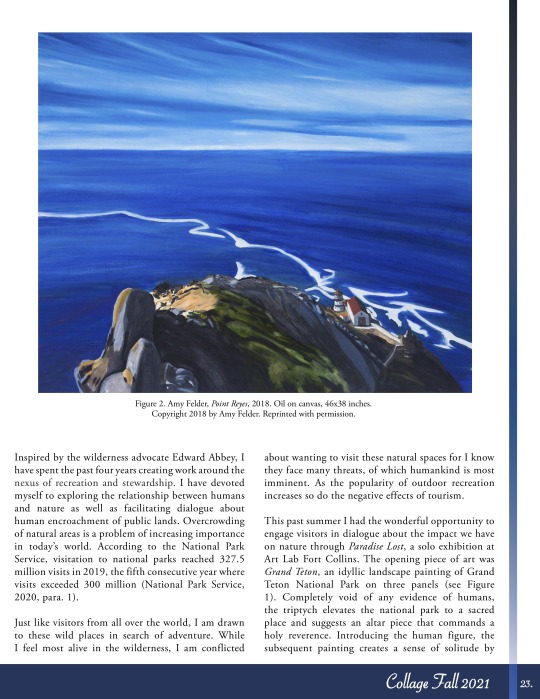
The Fall issue of Collage is now live! If you're interested in the solo show I had this summer, there's a write-up published in this issue called The Working Artist: Paradise Lost on page 22.
0 notes
Photo
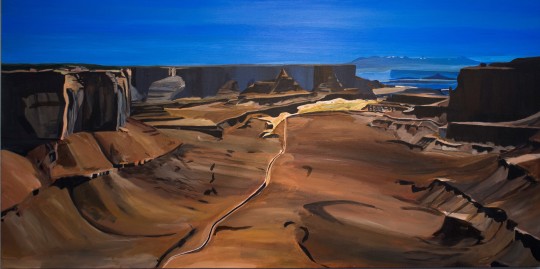
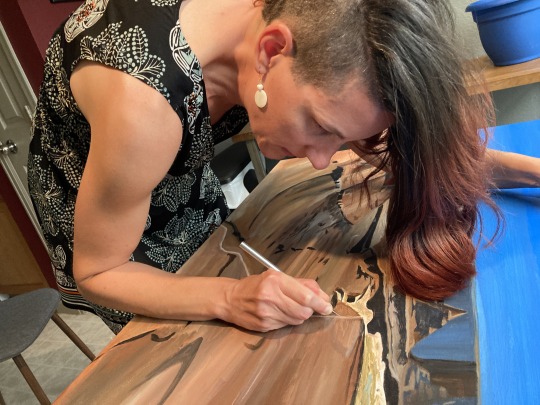
This summer I visited Canyonlands National Park’s Island of the Sky District for the first time. Staring down into the canyon, I was disappointed to see a road. Before becoming a National Park, Canyonlands had a history of mining. Roads like this one were built for mining purposes. To show how exploitation of the land leaves scars on the landscape, I used an Exacto knife to cut the canvas along the road.
What scars will the next generation see?
Image credit: Mining Scar, 2021 | Acrylic on canvas | 24x48 inches
#acrylicpainting#nationalpark#canyonlandsnationalpark#islandinthesky#fortcollins#coloradoartist#leavenotrace#artandecology#contemporaryart
1 note
·
View note
Photo
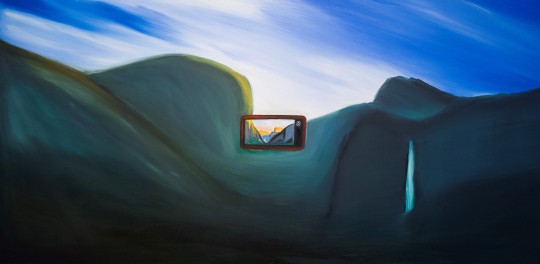
This painting is based on a camping trip in Yosemite National Park. I remember my husband and I woke early in the cold morning before dawn in order to get to Tunnel View where we could photograph the sunrise. While it is a beautiful memory, I recall staring at my phone the entire time.
How do you balance being present in the moment and taking pictures?
Image caption: Tunnel View, 2021 | Oil on canvas | 24x48 inches
0 notes
Photo
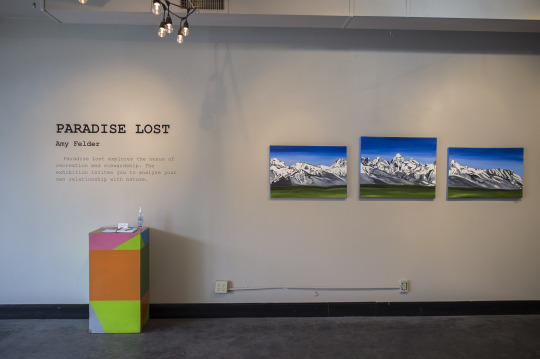
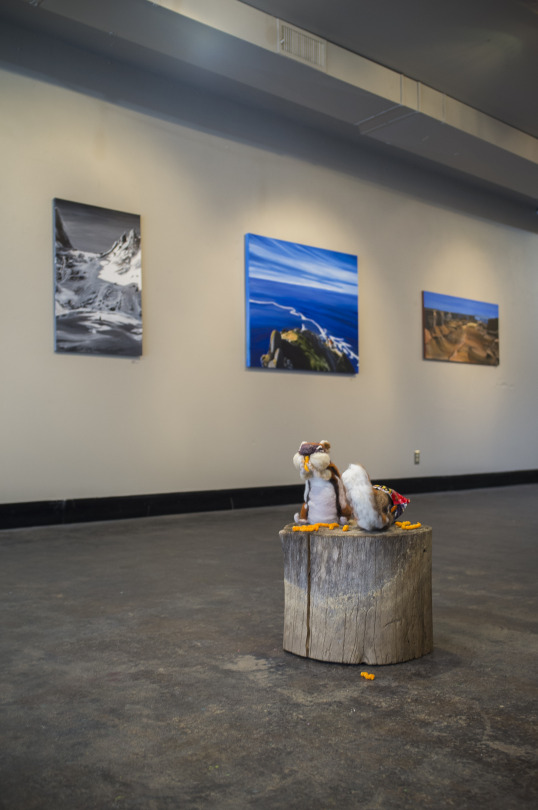
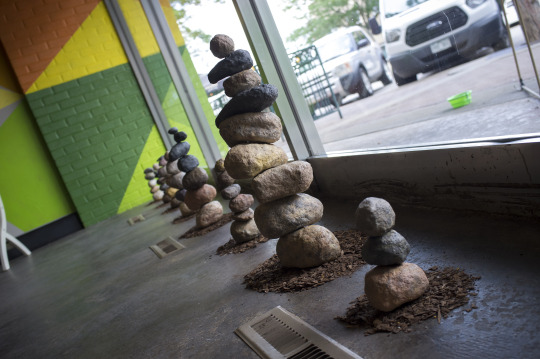
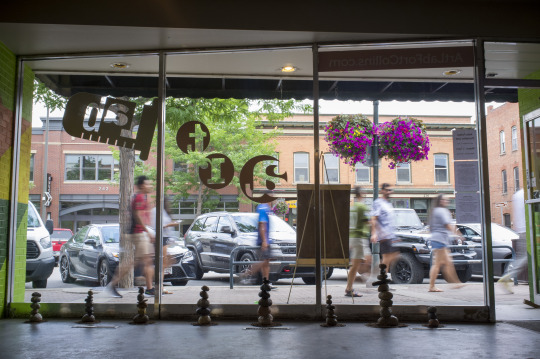
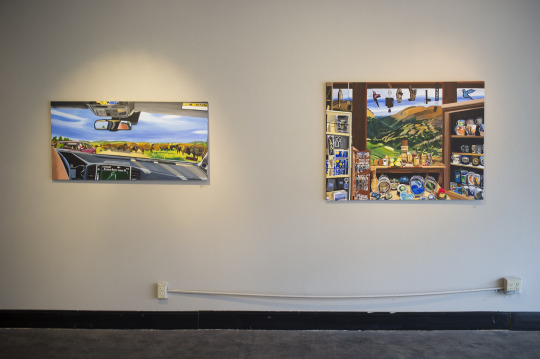
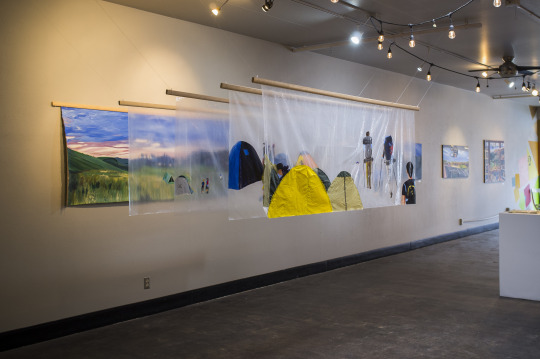
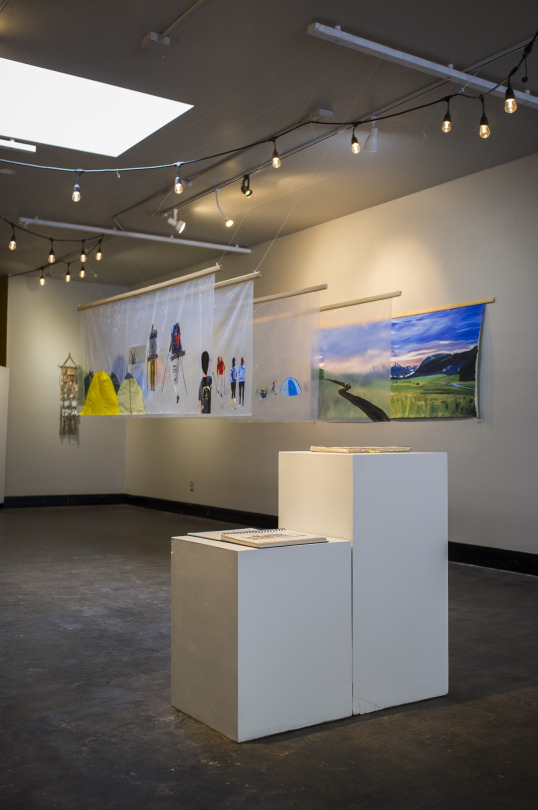
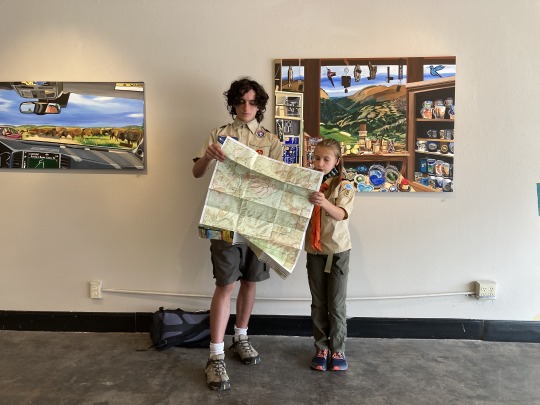
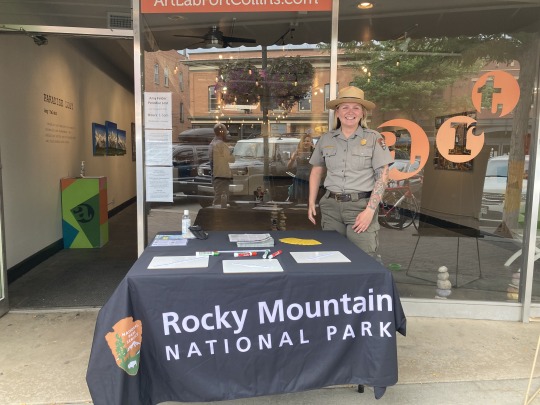
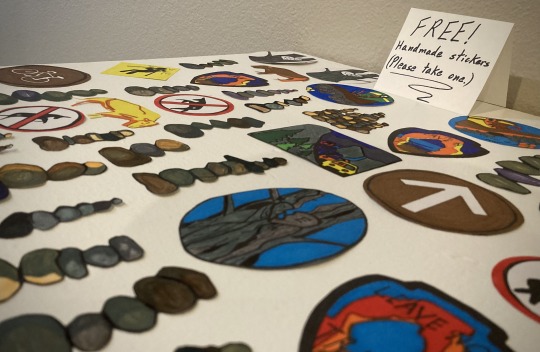
Inspired by the wilderness advocate Edward Abbey, I have spent the past four years creating work around the nexus of recreation and stewardship. I have devoted myself to exploring the relationship between humans and nature as well as facilitating dialogue about human encroachment of public lands. Overcrowding of natural areas is a problem of increasing importance in today’s world. According to the National Park Service, visitation to national parks reached 327.5 million visits in 2019, the fifth consecutive year where visits exceeded 300 million (National Park Service, 2020, para. 1).
Just like visitors from all over the world, I am drawn to these wild places in search of adventure. While I feel most alive in the wilderness, I am conflicted about wanting to visit these natural spaces for I know they face many threats, of which humankind is most imminent. As the popularity of outdoor recreation increases so do the negative effects of tourism.
This past summer I had the wonderful opportunity to engage visitors in dialogue about the impact we have on nature through Paradise Lost, a solo exhibition at Art Lab Fort Collins. The opening piece of art was Grand Teton, an idyllic landscape painting of Grand Teton National Park on three panels (see Fig. 1). Completely void of any evidence of humans, the triptych elevates the national park to a sacred place and suggests an altar piece that commands a holy reverence. Introducing the human figure, the subsequent painting creates a sense of solitude by portraying a single person dwarfed by the towering Hallett Peak of Rocky Mountain National Park.
Next the painting Point Reyes features a single lighthouse on the edge of a brilliant blue ocean on Point Reyes National Seashore (see Fig. 2). Small in scale when compared to the vast ocean and open sky, the artifact of human development may appear of little consequence. Yet, the lighthouse very subtly hints at a human history of developing the land and conquering the seas. Each of these pieces create an ideal image with little to no evidence of human presence when the reality is that these are all heavily visited places.
Then the exhibition transitioned to meticulously hand-embroidered patches. The first four patches were Merit Badges for following the “Leave No Trace” principles by refraining from feeding cute chipmunks, picking beautiful wildflowers, and inadvertently causing wildfires. In contrast, the next four patches were Demerit Badges for failing to practice outdoor ethics. Off Trail captures a hiking boot in mid-air about to crush a precious flower and Noise Pollution warns of a backpacker bombarded by sound waves.
These small patches depict what have become common, everyday problems caused by too many park visitors not respecting nature or others. Displayed on the wall was the quote “wilderness is not a luxury but a necessity of human spirit, as vital to our lives as bread and water” (Abbey, 1988, p. 165).
Corresponding to the Demerit Badges were wall hangings. I sew and weave wall hangings with topographical imagery that map the human impact on the natural world and provoke discussion about socially responsible practices. The weaving Erosion shows the negative effects of the patch Off Trail. The very loosely woven twine looks as though it may fall apart at any given moment. The weft alternates between white cloth with imagery of green topographical lines and burlap with imagery of red scars, where visitors have veered off trail.
The wall hanging Sounds of Northern Colorado combines fiber art and photos with a QR code. In our day-to-day lives, we are constantly bombarded by sounds and noises, most of which we block out as we go about our busy days. By incorporating a QR code that viewers can scan to listen to a playlist of recordings, my work invites the viewer to slow down and pay attention to the sounds of nature and civilization.
All of these sounds are a part of my personal experience. Yet, they speak to a larger issue, in fact, a global issue. The sounds of nature are becoming rarer. Instead we are faced with the noise of civilization, air traffic and sirens. Even the park system and the wilderness are unable to provide the escape, silence and peace of mind that they once did.
Lining the window, papier-mâché sculptures of cairns echo this idea that humans struggle with leaving nature be (see Fig. 3-4). Cairns pose a major threat to national parks as more and more people moving and stacking rocks disrupts ecosystems. Not only do people stack rocks, but they also leave graffiti on them. This is evident in the painting depicting a rock with the words “eat pizza” written on it. Another painting of a trail post reveals a no unicorns sticker above a no bicycles sign. While some may find it funny, vandalism is costly to national parks.
Even park visitors who strive to leave no trace may not consider how social media “sharing” drives visitors to national parks and causes congestion in places that are valued for their seclusion. The life-size painting of hands holding a camera phone about to snap a picture invites viewers to see themselves as the one holding the phone. The contemporary experience of nature through digital devices is further emphasized by a painting of an outstretched arm snapping a selfie. Viewers may begin to question their role in nature and consider how social media “sharing” may be to the detriment of the natural places they are seeking to capture.
Devices, screens, and windows present a barrier that prevents an authentic experience of nature and narrows one’s view. Bison Jam puts the viewer inside a car looking at a herd of bison blocking the road and raises the question of whether that road should exist (see Fig. 5). The Altar showcases an assortment of gift shop items blocking the window and obscuring a view of Rocky Mountain National Park (see Fig. 5).
Consumerism of nature has become the focus instead of revering it as Grand Teton called for at the beginning of the exhibition. My paintings span from untouched landscapes to those seen through screens and windshields; they lead viewers to analyze their own relationships with nature and often evoke a feeling of uncertainty at how to proceed in natural spaces.
A display of the quote “Industrial Tourism is a threat to national parks” set the stage for the signature piece of the exhibition – Overcrowded (see Fig. 6-7) (Abbey, 1988, p.65). Transparent panels combine tent fabric with hand-painted scenes of a busy campground. Windows in the panels allow viewers to glimpse a hopeful scene of a valley of bison untouched by human presence in Yellowstone National Park. Enticing viewers to an idyllic landscape that can only be reached by walking through panels depicting human activity, my installation work creates a space for viewers to examine the dichotomies between the human desire to preserve the wilderness and to enjoy it. The final quote read “we must make up our minds and decide for ourselves what the national parks should be and what purpose they should serve” (Abbey, 1988, p. 62).
The exhibition included supplementary programming that brought both my own experience and the viewers’ shared experiences with nature into question. Local Scouts performed a skit of the “Leave No Trace” principles (see Fig. 8). Immediately following I lead an art making activity in which scouts made stickers that could count toward requirements for an Art Scout badge. At another event, a Rocky Mountain National Park ranger came and engaged the public in a conversation about outdoor ethics (see Fig. 9). Afterwards I shared my artmaking process and the story of Paradise Lost in an artist talk. Visitors could take a piece of art home with them by picking out a free handmade sticker (see Fig. 10).
More images can be found at amyfelder.com.
References
Abbey, E. (1988). Desert solitaire. Tucson: University of Arizona Press.
National Park Service, (2020, February 27). National Park Visitation Tops 327 Million in 2019. https://www.nps.gov/orgs/1207/2019-visitation-numbers.htm
#artlabfc#soloshow#artandecology#art#recreation#stewardship#recreateresponsibly#leavenotrace#fortcollins#coloradoart#contemporaryart#exhibition
1 note
·
View note
Video
Take a virtual tour of Overcrowded! To see it in person, please be sure to stop by the Art Lab by Sunday. This is the last week of Paradise Lost!
Exhibition dates - July 14-August 1, 2021
Hours - 1-5pm, Wednesdays – Sundays
Location - Art Lab Fort Collins, 239 Linden St., Fort Collins, CO 80524
Image credit: Overcrowded, 2019 | Acrylic on canvas and plastic with nylon | 34x90x42 inches
#virtualtour#artlabfc#fortcollins#visitfortcollins#coloradoart#gallery#exhibition#artandecology#stewardship#recreation#recreateresponsibly#leavenotrace#overcrowded#nationalpark#yellowstonenationalpark#installation#lastweek#acrylic#plastic#nylon#lamar valley
0 notes
Photo


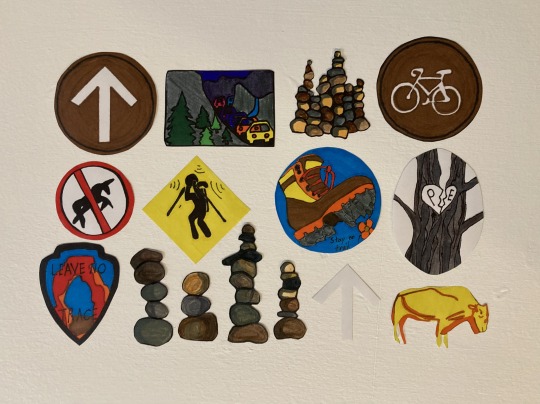
Here’s a sneak preview of the stickers I will be giving away tonight! Each one is made by hand. The last photo are some of my favorites! Comment below which ones are your favorites and I will make more of them today.
Tonight’s events:
Conversation with a ranger – Friday, July 23 at 6-7pm
Artist talk - Friday, July 23 at 7-8pm
Join us for a conversation with a Rocky Mountain National Park ranger about outdoor ethics! Immediately following I will give an artist talk about my solo show Paradise Lost. Come learn about my artmaking process and engage in extensive dialogue about human encroachment of public lands.
Exhibition dates - July 14-August 1, 2021
Hours - 1-5pm, Wednesdays – Sundays
Location - Art Lab Fort Collins, 239 Linden St., Fort Collins, CO 80524
To learn more, please visit amyfelder.com and artlabfortcollins.org.
#artlabfc#visitfortcollins#fortcollins#coloradoart#artandecology#leavenotrace#free#stickers#rockymountainnationalpark#parkranger#conversation#artisttalk#dialogue#outdoorethics#local#gallery#event#dogsok#allages#thingstodo#recreation#stewardship#exhibition
0 notes
Video
Join us for a conversation with a Rocky Mountain National Park ranger about outdoor ethics! Immediately following I will give an artist talk about my solo show “Paradise Lost.” Come learn about my artmaking process and engage in extensive dialogue about human encroachment of public lands. I will be giving away individually handmade stickers!
Exhibition dates - July 14-August 1, 2021
Hours - 1-5pm, Wednesdays – Sundays
Location - Art Lab Fort Collins, 239 Linden St., Fort Collins, CO 80524
Schedule of events:
Conversation with a ranger – Friday, July 23 at 6-7pm
Artist talk - Friday, July 23 at 7-8pm
“Paradise Lost” explores the nexus of recreation and stewardship. Featuring a breadth of mediums including paintings, wall hangings, installation, and embroidery, the exhibition invites viewers to analyze their relationships with nature. Paintings span from untouched landscapes to those seen through screens and windshields. Merit and demerit badges reframe and modernize the traditional “Leave No Trace” ideals. Wall hangings with topographical imagery map the human impact on the natural world. Installation work creates a space for viewers to examine the dichotomies between the human desire to preserve the wilderness and to enjoy it.
To learn more, please visit amyfelder.com and artlabfortcollins.org.
#nationalpark#rockymountainnationalpark#parkranger#conversation#free#allages#dogsok#event#fortcollins#visitfortcollins#colorado#coloradoart#contemporaryart#localart#stewardship#leavenotrace#recreation artisttalk#exhibtition#thingstodo#markyourcalendars#virtualtour#art
0 notes
Photo

Paradise Lost is currently on view at Art Lab Fort Collins! Please join us tonight for the artist reception!
Artist reception - Friday, July 16 at 6pm
Enjoy snacks while viewing the art! Local artist Amy Felder will be available for questions.
Paradise Lost explores the nexus of recreation and stewardship through the work of local artist Amy Felder.
Featuring a breadth of mediums including paintings, wall hangings, installation, and embroidery, the exhibition invites viewers to analyze their relationships with nature. Paintings span from untouched landscapes to those seen through screens and windshields. Merit and demerit badges reframe and modernize the traditional “Leave No Trace” ideals. Wall hangings with topographical imagery map the human impact on the natural world. Installation work creates a space for viewers to examine the dichotomies between the human desire to preserve the wilderness and to enjoy it.
Exhibition dates - July 14-August 1, 2021
Hours - 1-5pm, Wednesdays – Sundays
Scouts’ Leave No Trace presentation - Saturday, July 17 at 2pm
Listen to local Scouts share their knowledge of the Leave No Trace principles. Immediately following artist Amy Felder will lead an art making activity. Make stickers that will count toward requirements for an Art Scout badge! Please bring your own markers.
Artist talk - Friday, July 23 at 7-8pm
Come learn about Amy Felder's artmaking process and engage in extensive dialogue about human encroachment of public lands. Amy Felder will be giving away individually handmade stickers!
Location - Art Lab Fort Collins, 239 Linden St., Fort Collins, CO 80524
Stay tuned for information about a special visit from a Rocky Mountain National Park ranger next week!
To learn more, please visit amyfelder.com and artlabfortcollins.org.
#visitfortcollins#fortcollins#colorado#coloradoart#contemporaryart#exhibition#artistreception#gallery#artandecology#recreation#stewardship#event#art#museum#soloshow#free#allages#dogsok#localartist
0 notes
Photo
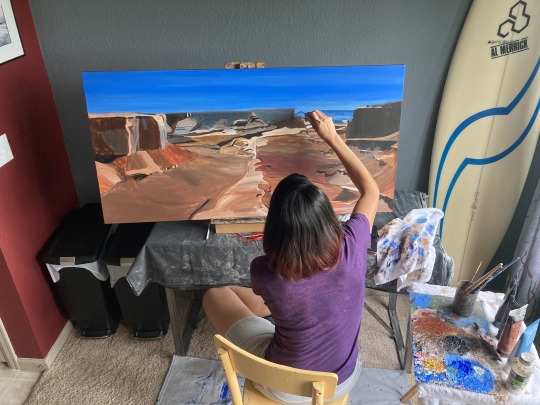




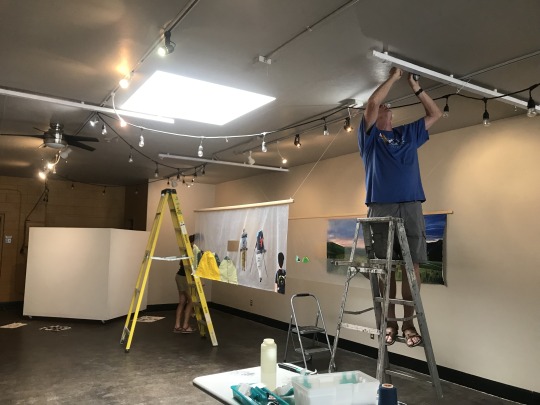
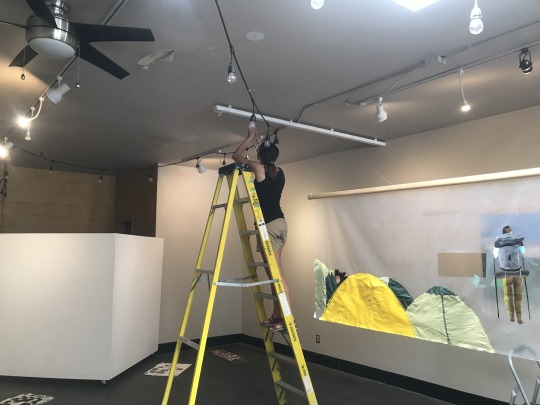
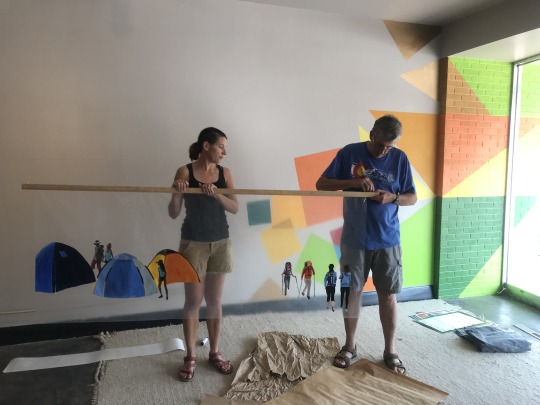
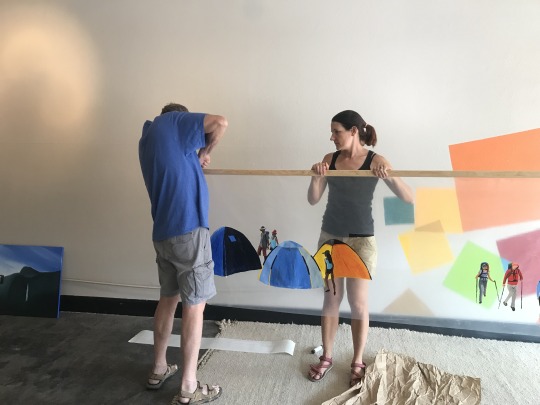
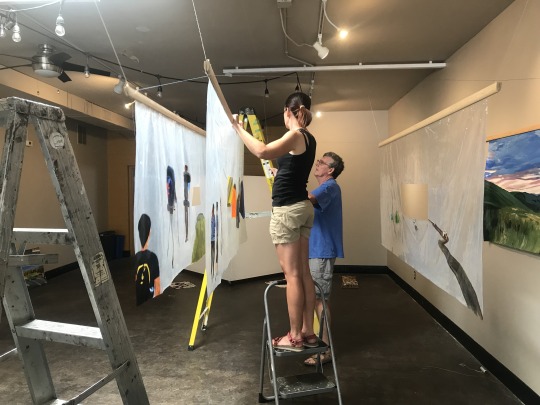

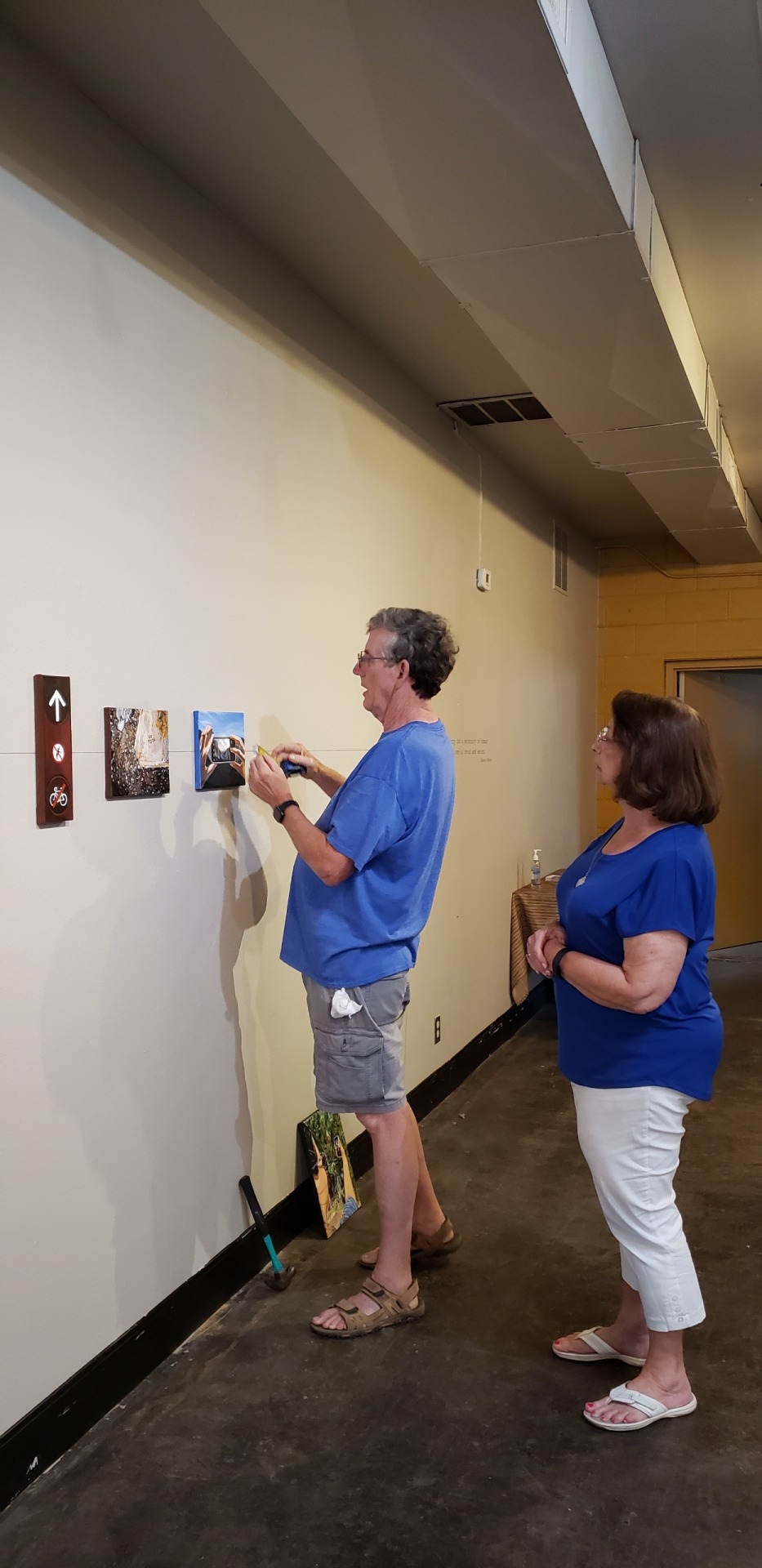
Here’s a teaser for "Paradise Lost," my solo show opening Wednesday, July 14 at Art Lab Fort Collins!
Exhibition dates - July 14-August 1, 2021
Hours - 1-5pm, Wednesdays – Sundays
Artist reception - Friday, July 16 6-8pm
Enjoy snacks while viewing the art! I will be available for questions.
Scouts’ Leave No Trace presentation - July 17 2pm
Listen to local Scouts share their knowledge of the Leave No Trace principles. Immediately following I will lead an art making activity. Make stickers that will count toward requirements for an Art Scout badge! Please bring your own markers.
Artist talk - July 23 7-8pm
Come learn about my artmaking process and engage in extensive dialogue about human encroachment of public lands. I will be giving away individually handmade stickers!
Location - Art Lab Fort Collins, 239 Linden St., Fort Collins, CO 80524
Special thanks to my mom and dad for helping me install my show! I love you Mom and Dad!
#soloshow#artlabfortcollins#recreation#stewardship#recreateresponsibly#leavenotrace#artandecology#markyourcalendars#exhibition#artevent#contemporaryart#coloradoartist#fortcollins#visitfortcollins#colorado#behindthescenes#artinstallation#teaser#wip
1 note
·
View note